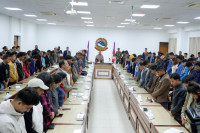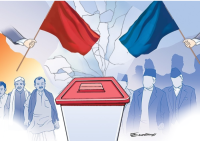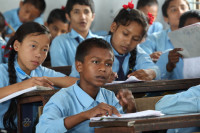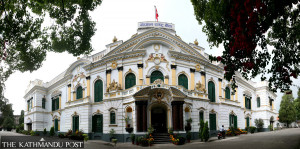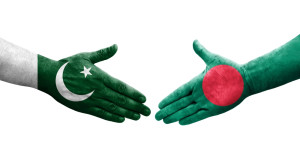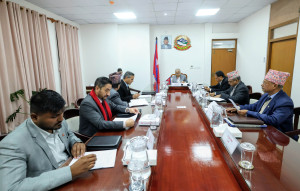Columns
Chhath beyond borders
Sita’s festival of the sun unites people abroad but awaits recognition in Nepal.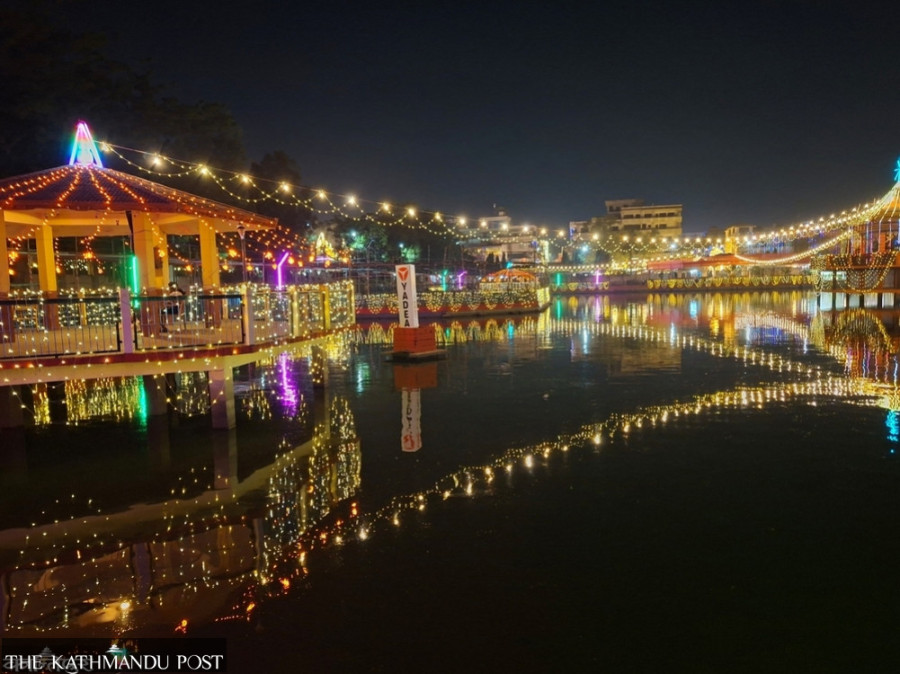
Anjali Sah
From the banks of the Lakhandei River in Sarlahi to artificial ponds in London and Doha, millions of devotees now gather every year to celebrate Chhath, one of the most ancient and ecologically rooted festivals of the world. Rooted in the mythology of Sita and Ram, the festival embodies the gratitude of people to the Sun, nature and life. Yet in Nepal, the very country believed to be Sita’s homeland, Chhath is still not fully recognised as a national festival.
Origins in the land of Sita
According to the Ramayan, Sita, the princess of Mithila, married to Ram of Awadh, was the first to observe the Chhath ritual to offer thanks to the Sun God (Surya) for granting life and prosperity. Among many oral traditions surrounding Chhath, the story of Sita is especially significant for the Madheshi people of Nepal, whose ancestral and emotional connection to Mithila runs deep.
From that ancient act of devotion, Chhath evolved as a festival beyond memory, surviving in the oral traditions of Mithila and Awadh regions that today span across southern Nepal and northern India. Over centuries, this festival travelled with the people—farmers, migrants and workers alike—and has become a celebration uniting those of Mithila, Awadh, Bajjika and Bhojpuri ancestry.
In Nepal’s Madhesh region, considered the heartland of Mithila, Chhath is more than a ritual: It is an identity, a living heritage and an act of faith passed from mothers to daughters, intergenerationally on the banks of rivers and ponds.
Faith, equality and the four sacred days
In Madhesh, where the Sun blesses the crops and sustains the livelihood of farmers, the festival is seen as nature’s partnership with humankind. The rituals begin right on Goverdhan Puja Day with Godhan Kutai, the symbolic preparation for the festival.
The four days unfold with devotion and discipline. On the first day, under the ritual of Nhay-Khay (bath and eat), devotees begin by bathing and eating simple satvik food, often cooked with khari, the residue from the oil-making process, symbolising purity and self-reliance. On the second day, Kharna, a day-long fast is observed, broken only after sunset with kheer (rice pudding) and other saltless offerings, shared with family and neighbours. On the third day, under the tradition of Sajhiya Ghat (evening argh), devotees dressed in new clothes gather on riverbanks decorated with banana leaves, paper and handmade lamps. At sunset, they offer argh (sacred water) to the setting sun. The entire night is spent there, families build makeshift pandals, staying together in music, prayer and light. On the final day, under the tradition of Bhorbha Ghat (morning argh), before dawn, devotees offer prayers to the rising sun, completing 36 hours of fasting and devotion.
When the clouds obscure the sun, devotees craft a Shreesapta, a symbol of the sun, and continue their worship, showing that faith transcends visibility. Unique foods like Thekuwa, Kasar, Khajuriya and fresh fruits fill the offering baskets, while banana leaves play a central role in both worship and decoration.
Beyond caste, class, gender and religion
Today, Chhath has outgrown its boundaries of caste, class, gender and even religion. In Janakpur, Birgunj and across the Madhesh plains, Hindus and Muslims stand together at the same riverbanks. Unlike other festivals, not just women participate in the rituals and fasting; anyone can do it. Increasingly, Nepalis from hilly regions also join in the celebration, wherever they live. In that unity, Chhath has become a living symbol of national harmony, a people’s festival that transcends borders and hierarchies.
As an indigenous festival, Chhath carries a deep ecological and egalitarian message: Anyone, regardless of identity, can perform it. There are no priests; every devotee performs their own worship. It is faith made democratic.
Global spread
The migration of Madheshi and Bihari communities has carried Chhath far beyond South Asia. From riverside gatherings in London to community parks in the Gulf and the U.S., people recreate their ancestral ghats with artificial ponds, banana leaf decorations and the same songs that echo across the plains of Nepal and India. The devotion travels wherever the diaspora goes, reminding them of sunlight, soil and the riverbanks they once called home.
The irony of recognition in Nepal
Despite its heritage and growing inclusiveness, Nepal has yet to grant Chhath the recognition it deserves. The national calendar lists it as a one-day festival, marking only the third day, the Sajhiya Ghat or evening worship, while the complete observance spans four days.
In Madhesh Province, two days are granted as public holidays, but elsewhere in Nepal, schools and government offices remain open even when devotees are on the ghats. “It feels discriminatory,” say many, “when a 36-hour ritual of fasting and worship is given only 24 hours of recognition.”
The conversation has reached Nepal’s Parliament several times, with proposals for an extended holiday. Activists, students and community leaders have repeatedly submitted applications for local leave, often succeeding only after prolonged discussion.
The issue, however, is larger than a holiday. It reflects how the state continues to “otherise” Madheshi traditions, even as it celebrates inclusion on paper. Nepal’s constitutional promise of equality remains incomplete as long as the festivals of one community are celebrated while those of another are only tolerated.
A call for equal sunlight
The people of Madhesh often say, “The sun shines on everyone equally.” That is the essence of Chhath: A festival of light, equality and gratitude. Yet the state that benefits from the faith and labour of the very farmers who worship the sun has not yet offered them the dignity of full recognition.
As Nepal moves deeper into federalism, it must ensure that its national calendar reflects the lived realities of all its people. Recognising Chhath as a multi-day festival, in educational institutions and government offices, and increasing public awareness would not just correct a symbolic oversight. It would affirm that Nepal’s unity is not built by uniformity, but by honouring diversity.
From the riverbanks of Janakpur to the waters of the Thames, Chhath continues to rise, with every offering of faith, every shared lamp and every dawn prayer to the sun. The question is not whether the sun will rise again. It always does. The question is whether the nation will open its eyes to its light.




 19.12°C Kathmandu
19.12°C Kathmandu
